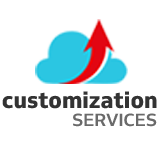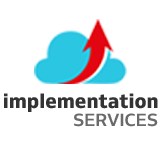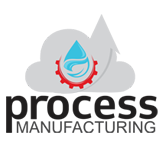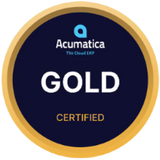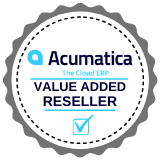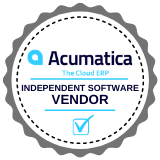Chocolate manufacturing is an art of food processing that involves the use of milk products, cocoa beans, and sugar. The chocolate prepared using milk as the main ingredient is known as sweet chocolate, while the chocolate prepared using cocoa powder is known as bitter chocolate. This process involves various steps like identification of raw materials and task allocation, preparation of ingredients, mixing and grinding, cooking, refining, cooling, and molding to get high-quality chocolates.
The chocolate market has evolved a lot over the last few years with the advent of new technologies. From that time, it is about automating all the processes for manufacturing and marketing/selling chocolate products. This is because automation has improved productivity and reduced human errors throughout the entire process. In addition to it, there are tons of features that have been added to ERP systems such as production planning, customer order tracking, etc.
Challenges in the Chocolate Manufacturing Industry
The chocolate manufacturing industry has been experiencing a number of challenges, including changing consumer preferences and the rising popularity of healthier products.
The first challenge is changing consumer preferences. The number of consumers in the United States that are interested in plant-based foods is increasing, and the chocolate manufacturing industry needs to be able to produce products that supply this demand. In addition, individuals with dietary restrictions such as diabetes or lactose intolerance are also looking for options. This has led to an increase in the variety of products available in the U.S. market, which has caused some challenges for chocolate manufacturers because they must create new designs and machinery to manufacture these products at high quality and low cost.
The second challenge is the rising popularity of healthier products. Over the past decade, there has been an increase in the number of people who are concerned about their health. Because of this, companies have started creating healthier versions of their products that use ingredients such as stevia instead of sugar or milk instead of cream. Similarly, to the previous challenge, this has led to a change in consumer taste buds that requires manufacturers to adjust their recipes so they can continue producing high-quality products.
The global chocolate manufacturing industry is predicted to grow at a CAGR of 3.7% from 2015 to 2020. There are numerous factors that influence this growth, including the growing demand for chocolates, increasing disposable income per capita, and the growing popularity of consuming chocolates as snacks. However, there are some challenges that this industry is facing, such as product diversification and seasonality of sales.
What is ERP and how does it help businesses?
ERP stands for “enterprise resource planning,” and is a system that helps businesses manage their resources.
Whether you’re an online retailer or a restaurant, your business likely has a lot of moving parts that are all in different places. Your inventory, your orders, your payments, and your accounts receivable are probably all in different software systems. It can be hard to keep track of where everything is, and to make sure you have the information you need to make smart business decisions.
Here’s the bottom line: ERP helps businesses organize their resources so they can get more out of them. Because of ERP’s ability to centralize information and automate processes, businesses can grow faster and reduce costs.
But how does an ERP system actually help your business to reduce costs?
The answer is simple: streamlining the operation of all areas of your business. When you have a single interface for all financial transactions in your company, that means no more double entries or missed steps. When you have streamlined inventory management, that means no more lost or misplaced inventory because of manual processes. And when you have a well-managed human resources department, that means you can focus on other parts of your business so that everything goes smoothly. That’s what an ERP system can do for your business: make things run smoother and faster, with less hassle and cost.
In addition to reducing administrative expenses, the ERP also offers better security for your data and makes information sharing easier between departments within a company.
Chocolate Manufacturing Industry and ERP choice
In order to choose the best ERP for your chocolate industry, you’ll want to follow these 7 steps.
Step 1: Know the basics of the Chocolate Manufacturing Industry
First, identify the industry your company is in. In this case, that’s the chocolate industry—not just any chocolate industry, but one that sells high-quality chocolates at a premium price. This is important to identify early on because it will help you understand where your business fits into the industry’s supply chain.
Step 2: Supply Chain Relativeness
Determine how your business fits into the supply chain. You might be a manufacturer or a distributor or even both; either way, this is important information for choosing an ERP system.
Step 3: Identify your company’s most important financial metrics.
For example, let’s say you’re a chocolate manufacturer. Which of the following metrics are most important to you?
- Number of units produced
- Cost per chocolate bar
- Sales in USD (cost of goods sold)
- Number of employees
Don’t worry if not all of these apply! Select the ones that are most important to you and move on to step 2.
Step 4: Understand which ERP solutions will be a good fit for your business.
Make sure you understand which ERP solutions are popular in the industry you’re working in—if you’re a food manufacturer, look at manufacturing ERPs; if you’re an entertainment company, look at entertainment ERPs. After doing some research on the types of ERPs available, select one or two that you find interesting, and move on to step 3. If there aren’t any solutions that will be a good fit for your business, this might mean that it’s time for your business to switch industries!
Step 5: Understand how well each of the possible solutions fits your company’s needs.
This means figuring out the features you want in your ERP, the price point you want to work within, and how much time you want to spend on implementation. Your company’s needs will change over time as they grow, so make sure that you are getting an ERP that can keep up with its changing demands.
Step 6: Consider how much customization you need
If you have specific needs that can’t be met by off-the-shelf software, then you may need to have an ERP developed specifically for your business. An off-the-shelf solution will save you money, but if it doesn’t meet your specific requirements, then it is no more useful than an Excel spreadsheet. A custom solution will cost more upfront but may be worth it in the long run. However, if you need to update your system every couple of years or so as your business changes, a customs system might not be worth the cost in the long run.
Step 7: decide what kind of company culture you have
Is it small and intimate? Or is it big and busy? A small corporation may work best with a simple system like Excel spreadsheets; something more complex (and maybe more expensive) may be needed for a large corporation.
Acu Process Manufacturing Software for your Chocolate Industry
APM’s product-tracking system helps confectioners ensure that no products are wasted, cross-contaminated, or spoiled, saving them money and providing a streamlined process that guarantees high quality. Based on the feedback from its first two releases, Acumatica fixed any bugs and implemented all the past learnings as it constructed Chocolate Manufacturing Software that is easy to use for online confectionary manufacturers.

Sangeetha brings 20 years of experience in Information Technology which includes Solution architecting, building micro services, research, and evaluation of business applications, integrating apps.




